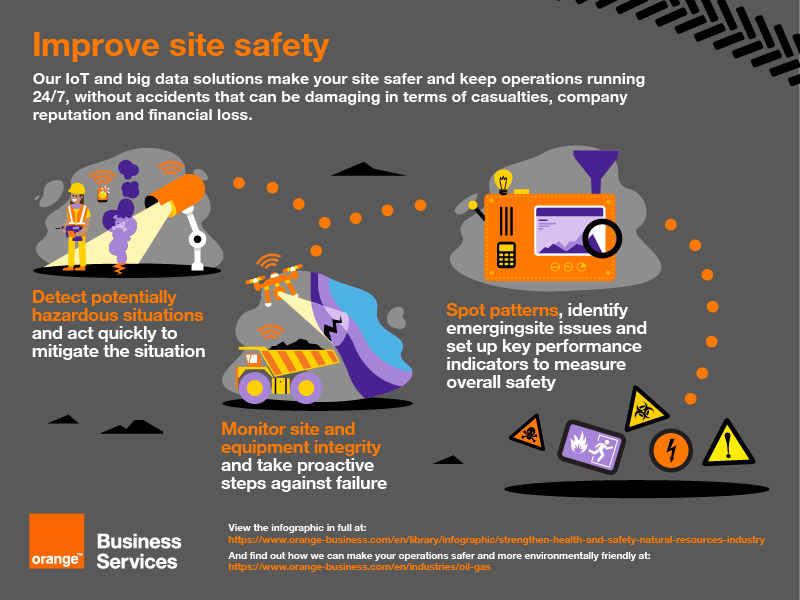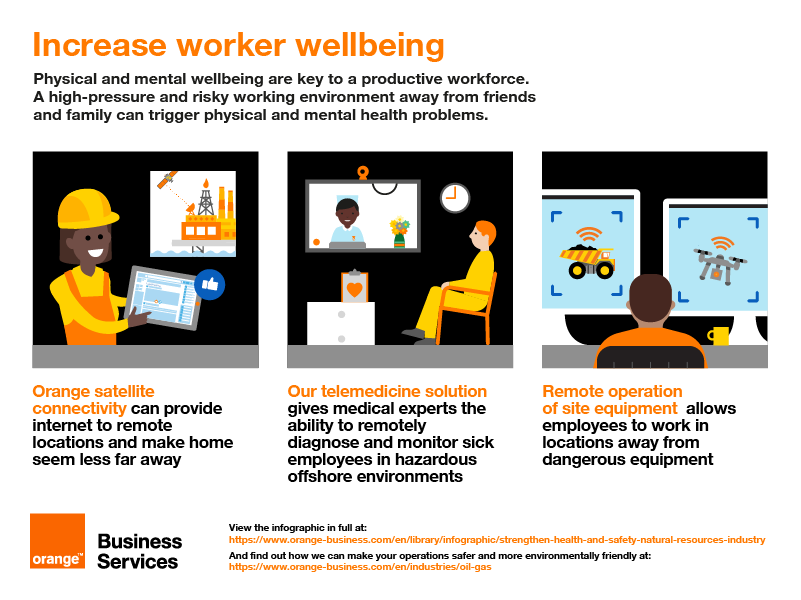Injuries caused by falling equipment, explosions from gas, accidents and spillages in tailings dams, workers becoming trapped underground from cave-ins, poisonous gases like methane and carbon monoxide spreading: all of these present significant and very real threats.
Safety has long been a major area of concern for the mining industry. In the U.S. alone, there were over 400 fatalities between 2008 and 2018. Mining industry experts maintain that annual fatalities have decreased considerably in recent years, but accidents on mining sites can still occur. Figures remain difficult to confirm, but estimates suggest that mining accidents are responsible for around 12,000 deaths per year, and according to the International Labour Organization (ILO), mining around the world employs approximately 1% of the global workforce but is responsible for 8% of fatal accidents.
These risks have consequences. Accidents in the mining sector cause workers to leave the industry and make it harder to recruit new talent. Mining companies need to take health and safety of workers very seriously, and technology is providing the tools for them to do so.
Technology is making mine sites safer
Digital technologies can have a dramatic effect on mine safety. For many years, technology providers have been helping transform the mining landscape through tools and techniques starting with fast, reliable connectivity to ensure secure data transmission around and between sites. Smart, connected devices and data analytics leveraging IoT is another area that has brought huge benefits to mining.
Vanson Bourne surveyed 100 large mining companies around the world and found that 40% have plans in place to deploy IoT solutions by the end of 2019, and 97% say they are experiencing, or expect to experience, significant benefits from IoT technology deployments. Furthermore, worker health and safety at mine sites is a specific area where mining companies expect to see big benefits: 44% foresee IoT helping improve the health and safety of their employees.
Specific uses of IoT in mining can include adding sensors to mining equipment to monitor and communicate data in real time to make workers safer, sites more secure and more. Huge driverless trucks and other vehicles that shift ore around a site do so without putting human workers and drivers in risky situations and locations. Sensors can also be added to workers’ clothing to monitor their health by tracking and transmitting data about their physical condition and can also raise alerts in the event of site accidents.
Rio Tinto is one of the world’s biggest mining companies and an example of a company that has made major advances in IoT technology deployments: they have been investing in the mine of the future based on data and automation and have already established integrated remote operational centers that monitor mining operations using IoT.
“Mining companies are now using digital and IoT tools to drive smarter, safer mining operations,” says Peter Laver, Global Large Accounts Director, Orange Business Australasia. “They are focusing on gathering data quickly and accurately, then analyzing it and using it to address potential issues more quickly, giving them more control over operations, improved impact assessments and, ultimately, causing less environmental damage than previously.”
The autonomous trucks introduced by Rio Tinto are another example of technology-powered mining advances that have made workers safer and also reduced fuel usage by 13%, and as such improved environmental performance by 13%, making sites and local areas less hazardous in the bargain. So much so that the company has committed to expanding its fleet of autonomous trucks by more than 50% by the end of 2019 in the Pilbara area of Western Australia, converting traditional trucks to autonomous vehicles.
Improving mine site health and safety was cited to Vanson Bourne as a key factor in mining companies embracing IoT, with 43% stating it as a primary motive for their IoT strategy.
Other techs making an impact
3D modeling is another digital tool that is making mining safer. Mining companies can use programs to create diagrams of underground areas at the exploration stage of site mapping, and 3D modeling lets them capture images of areas in a prospective mine that are highly difficult to reach, removing human workers from uncharted and potentially unsafe underground areas. Progressive mining companies are also building digital twins of processing plants to quickly test different situations and make mining operations more intelligent.
Artificial intelligence (AI) and machine learning (ML) can help mining companies identify signs that a piece of mining equipment is about to fail and flag it up for inspection and pre-emptive repair in advance. Some mining companies are also employing ML tools to find patterns in site events that have previously led to accidents or fatalities and, again, to pre-empt such incidents.
Smart mining technology makes mines healthier, safer places for mine workers and citizens in local areas. The smart mining market is forecast for major growth, with Transparency Market Research predicting a CAGR of over 10% per year to a value of $16 billion by 2025. Safety has become a genuinely key driver in the mining industry.
Being good neighbors
Mine safety does not only impact people who work there; residents in nearby towns and villages can be subject to health and environmental issues, too. Tailings dams, the earth-filled embankment dams where mine sites store byproducts after they’ve separated ore from gangue, are notorious for creating safety hazards.
Around the world there are 20 tailings dam failures per decade, and since 2015, there have been more than 10 tailings dam incidents in places like China, the Philippines, Israel, Mexico and Australia. Causes of failures can range from problems with the materials used to build the dams, usually tailings themselves, to problems with drainage mechanisms. The Brazilian state of Minas Gerais, the location of two major tailings dam disasters in 2019, has now committed to using smart monitoring for its dams, using IoT sensors to monitor water pressure in the walls of the dam in real time and send measurements to a cloud dashboard.
Digital tech can have a profound impact on safety and health in the mining sector, and mining companies are investing in smart digital tools to enhance their operations. According to the Global Smart Mining Market report from Transparency Market Research, in 2014, the worldwide smart mining market was valued at $US6 billion but is forecast to grow to $US22 billion by 2024, at a CAGR of around 15% per year.
Download our white paper Compelling opportunities in oil and gas present new challenges to find out more about strategies for keeping employees safe at work.

